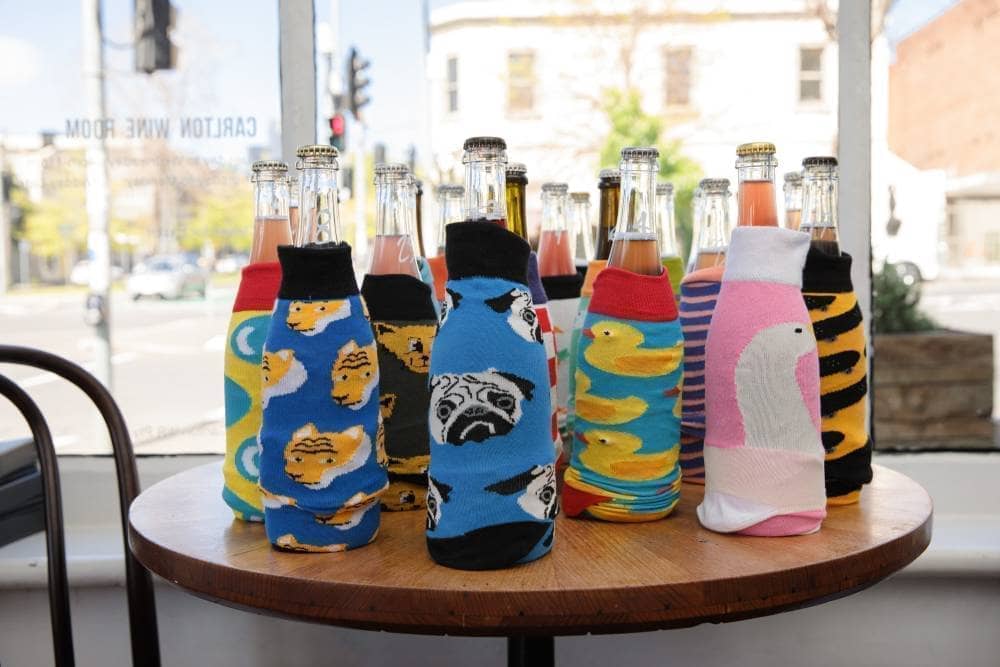It’s rare for a young winemaker to kick of their solo career with their own vineyard informing their wines, and it’s even rarer to have planted that vineyard themselves. Jonathan Hughes, with the help of his brother Matthew, did with the Mewstone vineyard and wine label. And this is no story of generational wealth at play, just one of a lot of hard work and an unwavering eye to the future. Hughes’ Mewstone wines, with pinot noir, chardonnay and riesling at the fore, skirt with the classic, with judicious use of skin contact with the whites and whole bunch with the reds adding depth and structural complexity. Hughes was the Young Gun of Wine Best New Act for 2018.
Growing up in Tasmania’s north-west, Jonathan Hughes didn’t have a clear direction when he finished school. Against all his better instincts, he studied economics. But it didn’t stick. A heart-to-heart with his father followed, who urged him to find something he liked and to just get involved, sure that he would find a niche. Well, that thing turned out to be wine, and it did stick.
Hughes studied viticulture and oenology at Lincoln University in Christchurch, New Zealand, which led to vintage work at the legendary Felton Road, Central Otago, across the Tasman at Bleasdale in Langhorne Creek, and at Stonier on the Mornington Peninsula. Hughes subsequently worked in the Hunter Valley, at Ceretto, in Piedmont, and in Canada’s Okanagan Valley, in British Columbia.
Returning home, Hughes took up a position alongside Canadian winemaker Conor van der Reest at the Moorila Estate winery, in the Hobart suburb of Berriedale. Hughes stayed on for seven years, during which, Jonny (as he’s known) was approached by his brother Matthew to plant a vineyard not far from Hobart, on an old cherry orchard. They bought that land, and the brothers Hughes planted their vineyard on the property in the micro-hamlet of Flowerpot near the D’Entrecasteaux Channel, which separates Bruny Island from Tasmania proper. That was in 2011, and pinot noir was planted in the ascendency.
The vineyard is loving hand-tended, with the influence of renowned soil microbiologist and neighbour (that’s handy, hey) Letetia Ware being felt keenly in the management plan, with compost teas, mulches and the like encouraging a nourished, living soil. Naturally, all fruit is hand-picked.
Jonny currently makes his wine for Mewstone (Matthew is a financial partner, but Jonny does most of the physical work) at the Pooley facility, keeping him in close quarters with the brilliant husband and wife team of Anna Pooley and Justin Bubb. An onsite winery is planned for 2021. Jonny very much sticks to a low-tech approach in the winery, with ambient yeasts and malo bugs used, and no additions bar sulphur, and sometimes none of that either. He uses judicious amounts of whole bunches in the red ferments and isn’t shy of employing skin contact for the whites, from a little to a lot, with residual sugar a feature of his rieslings when necessary for balance.
Wine from non-estate fruit sits under the Hughes & Hughes label, including pinot gris, sauvignon blanc and riesling, all with varying levels of skin contact. The core Mewstone range is sourced from the Flowerpot vineyard (now with 3.5 hectares of vines), with a chardonnay, pinot noir, riesling, syrah and sauvignon blanc (now discontinued) produced. They also source some dornfelder, a German variety, from Tasmania’s north-west, making one of perhaps two or three versions of the wine in this country. Well, they use it in two wines, so they may monopolise dornfelder production, though the second wine comes in a blend with merlot and sauvignon blanc. That one sits under their ‘Living Wines’ banner and is bottled sans sulphur, as its stablemate, a pét-nat called ‘Soirée’.




